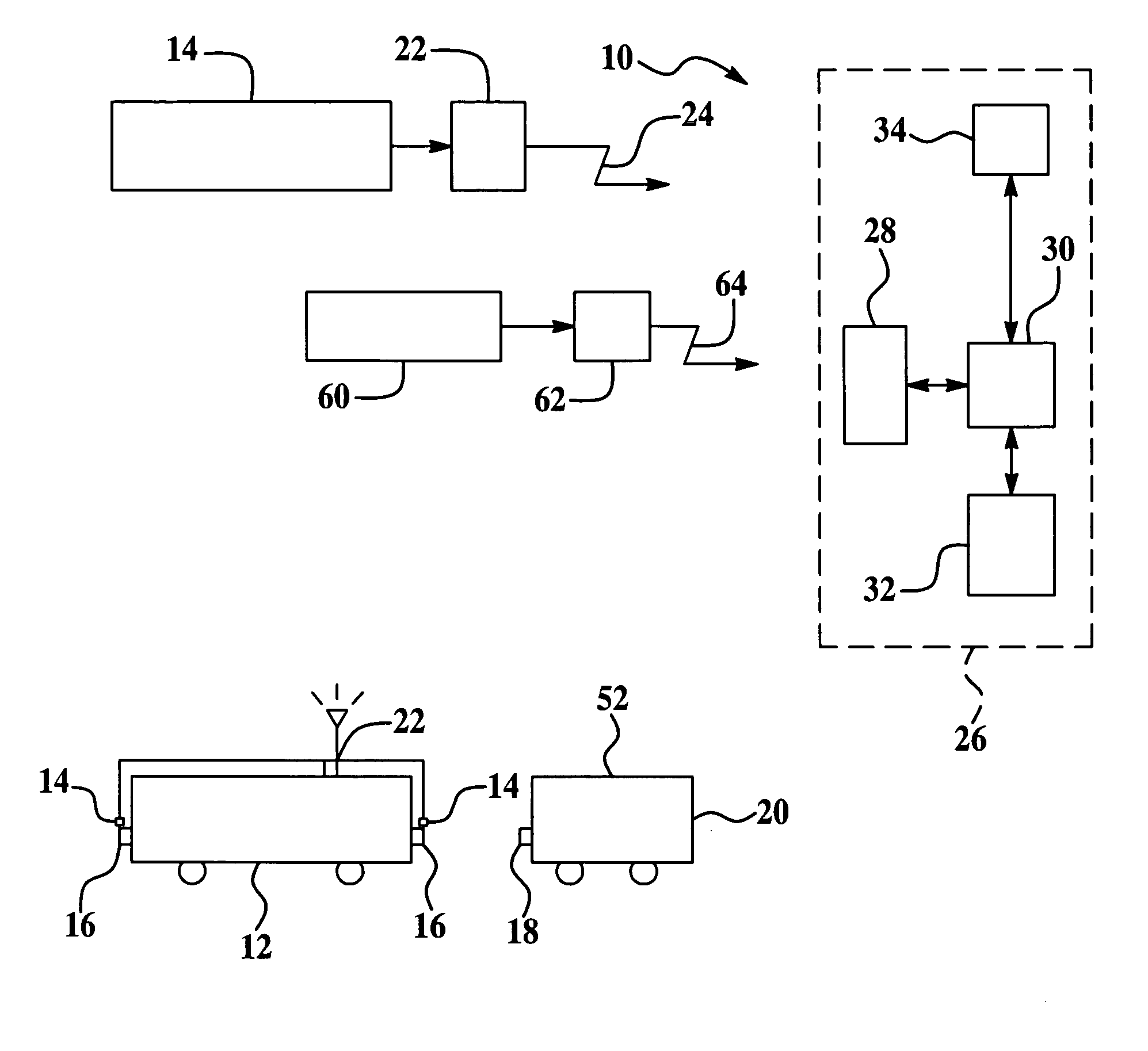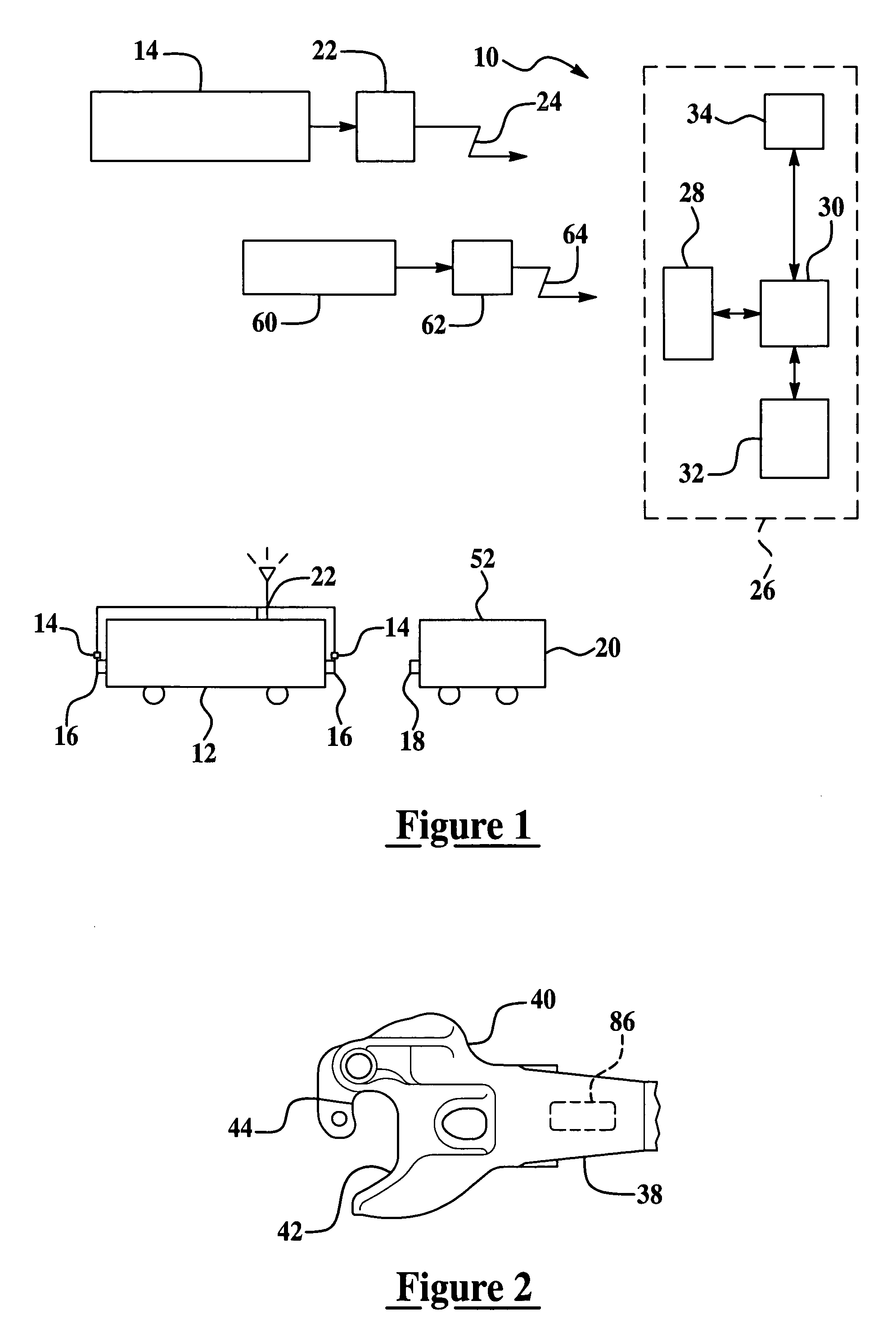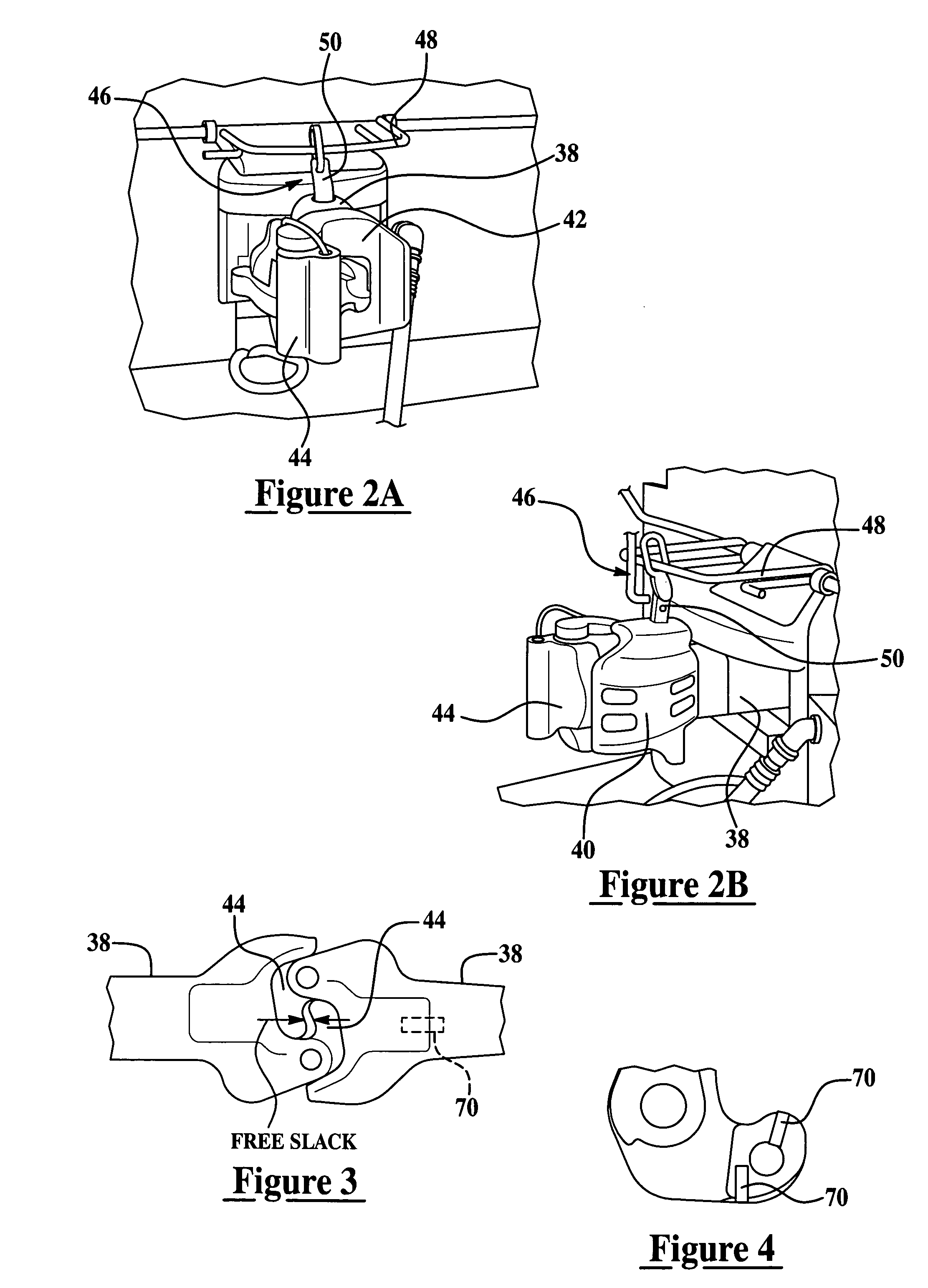System and method for determining whether a locomotive or rail engine is coupled to a rail car or other engine
a technology for locomotives and rail engines, applied in the field of rail yards, can solve the problems of limiting the knowledge of rolling stock whereabouts to at most, inefficient operator-monitored systems, and complex operation of the entire rail yard
- Summary
- Abstract
- Description
- Claims
- Application Information
AI Technical Summary
Benefits of technology
Problems solved by technology
Method used
Image
Examples
Embodiment Construction
[0024]Exemplary embodiments of the present invention are directed to a system and method for robust determination of a locomotive's coupler status. In general, yard engines or locomotives are dedicated to moving road locomotives or other rail cars (e.g., cars that are pushed or pulled by locomotives) to and from different service and staging areas of a rail yard. Accordingly, it is desirable to know when a yard engine is coupled to a rail car or road locomotive. In accordance with an exemplary embodiment, sensors are provided to determine both a coupled state and an uncoupled state of the locomotive. The sensor output is conveyed over a wireless network to a control and monitoring system. In one exemplary embodiment the coupler sensor data may be combined with other data such as speed and direction of motion of the locomotive, which can also be provided wirelessly. This information allows assessment and utilization of the locomotive. Furthermore, the coupler status can be used to mo...
PUM
 Login to View More
Login to View More Abstract
Description
Claims
Application Information
 Login to View More
Login to View More - R&D
- Intellectual Property
- Life Sciences
- Materials
- Tech Scout
- Unparalleled Data Quality
- Higher Quality Content
- 60% Fewer Hallucinations
Browse by: Latest US Patents, China's latest patents, Technical Efficacy Thesaurus, Application Domain, Technology Topic, Popular Technical Reports.
© 2025 PatSnap. All rights reserved.Legal|Privacy policy|Modern Slavery Act Transparency Statement|Sitemap|About US| Contact US: help@patsnap.com



